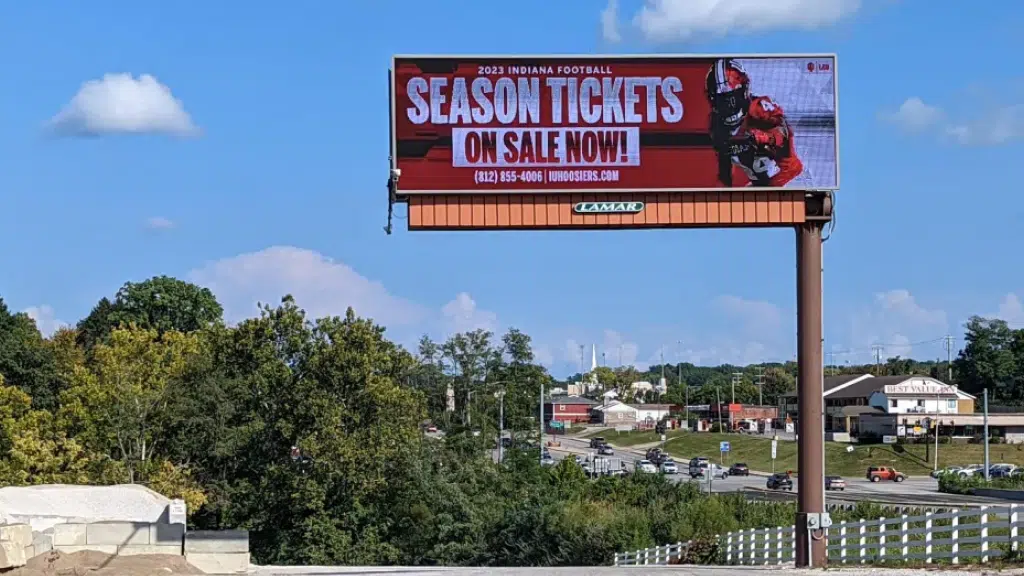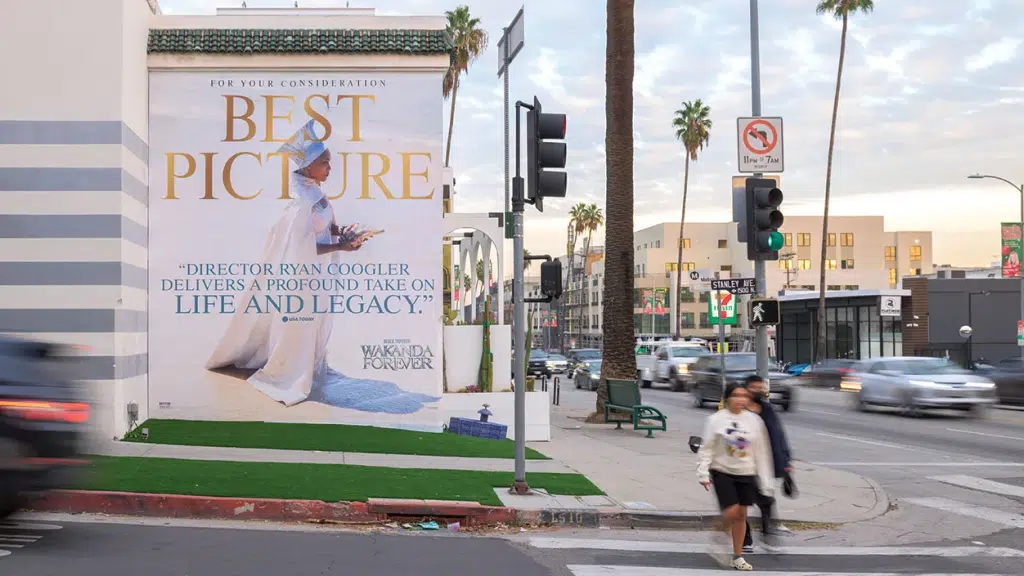Location determines who sees the billboard. It also decides how many people see it, whether it’s actually visible to passersby, and even what kind of immediate action someone can take when they see the board.
When you put up a billboard, you need to think location first. Here’s a deep dive into why location is just as critical to billboard success as design and how to find the right place to put yours.
You probably associate the refrain “location, location, location” with real estate. But did you know location is just as important for a successful billboard campaign?

What Does Billboard Location Mean?
Most obviously, it means where the billboard sits. It could be on a busy highway, on a side street near a famous city landmark, popping out of a cornfield or lighting up the side of a building. Location covers the address of the board as well as where it’s physically located — at eye level or elevated off the ground. That location is based on what traffic is like in the area and the optimal way to view the board.
A billboard could be:
- Rural, urban or suburban
- Along a highway, city road or on a building
- High off the ground in a city or barely a few feet off the ground on a lonely road

Why Does Location Matter for Billboards?
Billboards only work when the right people see them. Above all, this means that your target demographic needs to be in the vicinity of your billboard regularly to see it. For instance, if you are advertising an R&B album by a Gen Z artist, you want to find an area where young R&B fans hang out and avoid areas with an older population who may not know the singer.
The billboard vendor should have some information about nearby demographics. You can also do your own research to determine who goes to the area — and sometimes it’s obvious. Look at the surroundings and draw some obvious conclusions. If the board is located near a zoo, lots of families will see it.
But it’s not as simple as just where the board is. You also have to consider other things. For instance, consider the direction of traffic and how that will impact your board. Is it located on the driver or passenger side? How long can people see the board before they pass it? Are there other billboards nearby?
It’s not just about who can see your board. It’s also about how they can see it — some boards become obstructed. Was the billboard erected near a tree and the branches have grown out and now obscure some parts of the board? Did a nearby business put up a sign that makes it hard to see the billboard? Has a new apartment building been built in front of your sign? Those considerations can turn a once-prime location into a bad one.
Billboard location can also be about whether anyone can see it at all, as in finding the right lighting. Not every board is illuminated, and that can cause issues. After all, billboards should ideally be visible 24/7. A billboard that isn’t lit up is only visible during daylight hours, which means you miss out on hours’ worth of connections.
Finally, location also matters in terms of what’s around your building. Maybe a billboard has a fantastic location downtown in an area your target demographic frequents. That sounds perfect — except that the board sits on top of a building with a strip club, and you are advertising a very family-friendly product. In this case, the “perfect” location becomes less desirable. (Of course, the opposite can also be true. Say you’re advertising a salty snack food. Then a board that sits on top of a shop selling weed could be just the right fit.)
How to Find the Right Location for Your Billboard
Here are the five factors you need to consider to find the right billboard location.
1. Target Audience
Ask for information about who sees the billboard and do your own due diligence as well. Look at the demographic breakdowns of surrounding neighborhoods. Examine traffic counts. And listen to your gut. If the board is near a club where people who love the artist you’re advertising, it might be the perfect place for your board, regardless of what local demographic breakdowns suggest.
2. Surroundings
Remember, again, the “location, location, location” refrain. Where you put your billboard matters in terms of audience but also in terms of what’s around it. Fair or not, your content will be judged by the message as well as what’s nearby. Edgy brands can be in edgy surroundings, but family-focused brands shouldn’t be. Looking at the advertisers who already have billboards in the area can provide guidance on what works (and, noting what’s absent, what doesn’t).
3. Lighting
Ask about illumination on your board. You don’t want to miss out on nighttime passersby.
4. Visibility
For optimal visibility, the billboard should be:
- Facing front, so it’s visible to oncoming traffic.
- Unobscured by nearby trees, shrubs, buildings or construction equipment.
- Placed at a readable height, which means far enough off the ground that people can read the entire message or view the whole image, but not so high that they have to look up or adjust their field of vision.
5. Sizing
All billboards are not created equal when it comes to size. Some are big, some are small, some are humongous. Your location dictates what options are available to you, but it’s something you want to think about before committing to a location. Bigger isn’t always better. You may not need a huge board; a smaller one might fit your intentions. What’s most critical is how the billboard size plays into the vision for your campaign, not finding the largest possible option.
Location will determine a great deal of the success of your campaign. Reaching the right people in the right place can make your message more effective. Want help finding the best billboard location for your next campaign? Contact DASH TWO, and we can assist you.

